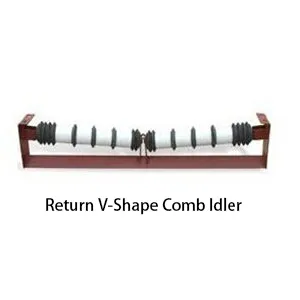 Afrikaans
Afrikaans  Albanian
Albanian  Amharic
Amharic  Arabic
Arabic  Armenian
Armenian  Azerbaijani
Azerbaijani  Basque
Basque  Belarusian
Belarusian  Bengali
Bengali  Bosnian
Bosnian  Bulgarian
Bulgarian  Catalan
Catalan  Cebuano
Cebuano  Corsican
Corsican  Croatian
Croatian  Czech
Czech  Danish
Danish  Dutch
Dutch  English
English  Esperanto
Esperanto  Estonian
Estonian  Finnish
Finnish  French
French  Frisian
Frisian  Galician
Galician  Georgian
Georgian  German
German  Greek
Greek  Gujarati
Gujarati  Haitian Creole
Haitian Creole  hausa
hausa  hawaiian
hawaiian  Hebrew
Hebrew  Hindi
Hindi  Miao
Miao  Hungarian
Hungarian  Icelandic
Icelandic  igbo
igbo  Indonesian
Indonesian  irish
irish  Italian
Italian  Japanese
Japanese  Javanese
Javanese  Kannada
Kannada  kazakh
kazakh  Khmer
Khmer  Rwandese
Rwandese  Korean
Korean  Kurdish
Kurdish  Kyrgyz
Kyrgyz  Lao
Lao  Latin
Latin  Latvian
Latvian  Lithuanian
Lithuanian  Luxembourgish
Luxembourgish  Macedonian
Macedonian  Malgashi
Malgashi  Malay
Malay  Malayalam
Malayalam  Maltese
Maltese  Maori
Maori  Marathi
Marathi  Mongolian
Mongolian  Myanmar
Myanmar  Nepali
Nepali  Norwegian
Norwegian  Norwegian
Norwegian  Occitan
Occitan  Pashto
Pashto  Persian
Persian  Polish
Polish  Portuguese
Portuguese  Punjabi
Punjabi  Romanian
Romanian  Russian
Russian  Samoan
Samoan  Scottish Gaelic
Scottish Gaelic  Serbian
Serbian  Sesotho
Sesotho  Shona
Shona  Sindhi
Sindhi  Sinhala
Sinhala  Slovak
Slovak  Slovenian
Slovenian  Somali
Somali  Spanish
Spanish  Sundanese
Sundanese  Swahili
Swahili  Swedish
Swedish  Tagalog
Tagalog  Tajik
Tajik  Tamil
Tamil  Tatar
Tatar  Telugu
Telugu  Thai
Thai  Turkish
Turkish  Turkmen
Turkmen  Ukrainian
Ukrainian  Urdu
Urdu  Uighur
Uighur  Uzbek
Uzbek  Vietnamese
Vietnamese  Welsh
Welsh  Bantu
Bantu  Yiddish
Yiddish  Yoruba
Yoruba  Zulu
Zulu Conveyor Belt Idler Rollers for Enhanced Material Handling Efficiency and Reliability
Understanding Conveyor Belt Idler Rollers A Comprehensive Overview
Conveyor systems are a backbone of efficiency in various industries, including manufacturing, logistics, and mining. Among the essential components of these systems are conveyor belt idler rollers. These rollers play a crucial role in facilitating the smooth functioning of conveyor belts, ensuring materials are transported efficiently from one point to another.
What Are Idler Rollers?
Idler rollers are cylindrical components that support the conveyor belt during its operation. They are positioned along the conveyor's length and serve multiple purposes supporting the belt's weight, maintaining its alignment, and reducing friction as the belt moves. This helps to minimize wear and tear, ultimately extending the lifespan of both the roller and the conveyor system.
Types of Idler Rollers
Idler rollers come in various types, each designed for specific applications
. The most common include1. Flat Idler Rollers These are used to support the loaded sections of the conveyor. Their flat surface ensures that the belt remains properly positioned and minimizes the wear experienced at the surface of the belt.
2. Troughing Idler Rollers Featuring a slight angle that creates a trough shape, these rollers are perfect for carrying bulk materials. The design ensures that the materials stay centered on the belt, preventing spillage and loss of product.
3. Return Idler Rollers Located on the return side of the conveyor, these rollers support the empty belt as it travels back to the loading point. Although they do not bear much weight, their functionality is vital in maintaining the overall operational efficiency of the conveyor system.
conveyor belt idler rollers

4. Impact Idler Rollers Positioned in high-impact zones, such as loading areas, these rollers are specially designed with added durability to absorb the shock as materials collide with the belt.
Materials and Construction
Idler rollers are typically constructed from durable materials such as steel, aluminum, or rubber, depending on the specific requirements of the application. The outer surface of the idler is often coated or treated to enhance resistance to wear, corrosion, and weather, which is particularly important in outdoor or harsh environments.
Moreover, modern idler rollers may come equipped with features like sealed bearings to reduce maintenance needs and prevent contamination. This is especially advantageous in industries where uptime is critical, as it minimizes the risk of unexpected breakdowns.
Importance of Regular Maintenance
Although idler rollers are engineered for durability, they still require regular maintenance to ensure optimal performance. Monitoring for signs of wear, such as unusual noise levels, vibrations, or misalignment, can prevent more significant issues down the line. Regularly cleaning the rollers to remove dirt and debris is also essential, as contaminants can impede smooth operation and lead to premature failure.
Furthermore, periodic inspections give operators the opportunity to lubricate the bearings and replace any worn components before they can cause further damage to the conveyor system.
Conclusion
In summary, conveyor belt idler rollers are an indispensable component of conveyor systems across various industries. Their ability to support, align, and reduce friction for the conveyor belt is crucial for maintaining operational efficiency and prolonging the lifespan of the entire system. By understanding the different types, materials, and necessary maintenance practices associated with idler rollers, industries can ensure that their conveyor systems run smoothly and effectively. Investing in quality idler rollers, coupled with a robust maintenance program, is key to maximizing productivity and minimizing operational costs.
-
Revolutionizing Conveyor Reliability with Advanced Rubber Lagging PulleysNewsJul.22,2025
-
Powering Precision and Durability with Expert Manufacturers of Conveyor ComponentsNewsJul.22,2025
-
Optimizing Conveyor Systems with Advanced Conveyor AccessoriesNewsJul.22,2025
-
Maximize Conveyor Efficiency with Quality Conveyor Idler PulleysNewsJul.22,2025
-
Future-Proof Your Conveyor System with High-Performance Polyurethane RollerNewsJul.22,2025
-
Driving Efficiency Forward with Quality Idlers and RollersNewsJul.22,2025





























